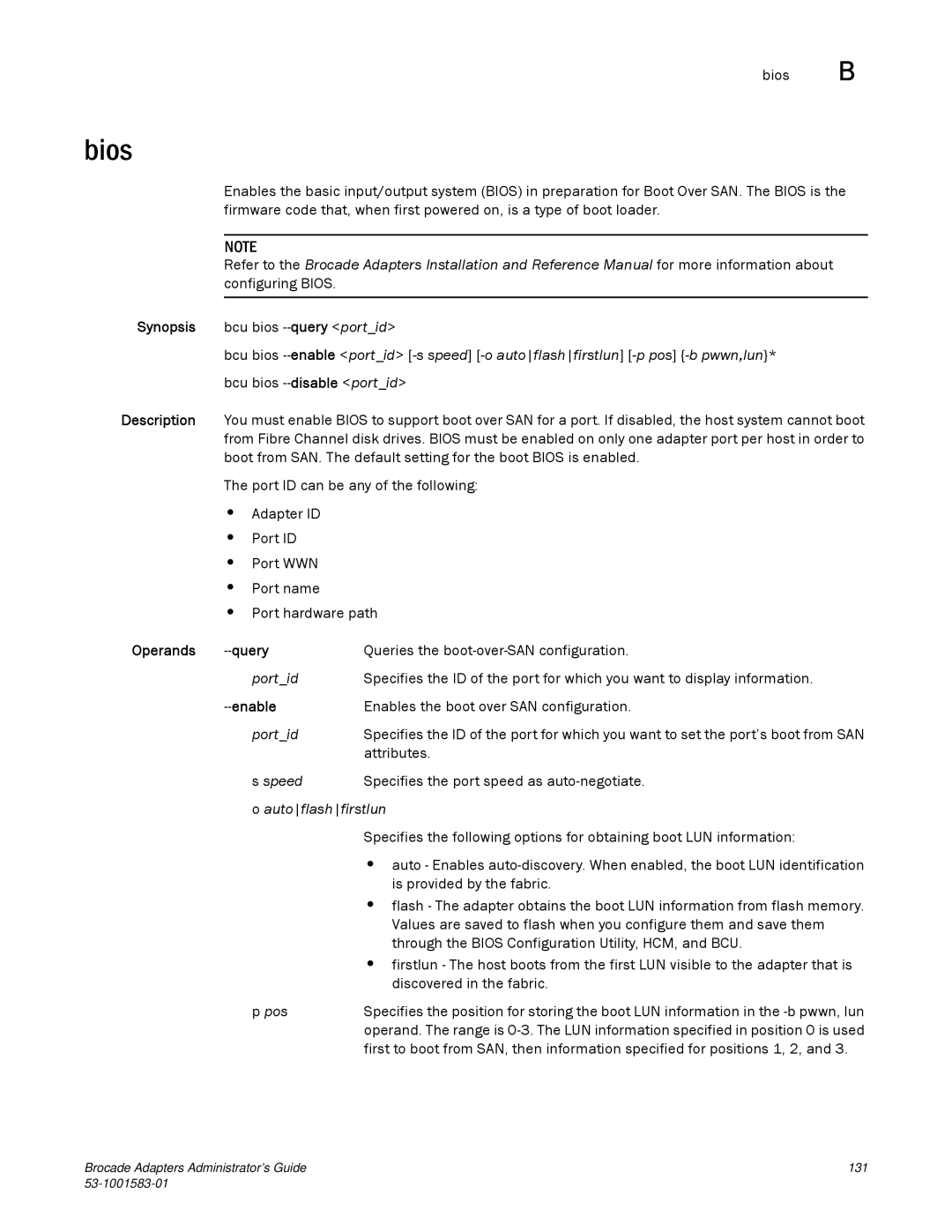
bios B
bios
Enables the basic input/output system (BIOS) in preparation for Boot Over SAN. The BIOS is the firmware code that, when first powered on, is a type of boot loader.
NOTE
Refer to the Brocade Adapters Installation and Reference Manual for more information about configuring BIOS.
Synopsis bcu bios --query <port_id>
bcu bios
bcu bios
Description You must enable BIOS to support boot over SAN for a port. If disabled, the host system cannot boot from Fibre Channel disk drives. BIOS must be enabled on only one adapter port per host in order to boot from SAN. The default setting for the boot BIOS is enabled.
The port ID can be any of the following:
•Adapter ID
•Port ID
•Port WWN
•Port name
•Port hardware path
Operands |
| Queries the |
| port_id | Specifies the ID of the port for which you want to display information. |
| Enables the boot over SAN configuration. | |
| port_id | Specifies the ID of the port for which you want to set the port’s boot from SAN |
|
| attributes. |
| s speed | Specifies the port speed as |
oautoflashfirstlun
| Specifies the following options for obtaining boot LUN information: |
| • auto - Enables |
| is provided by the fabric. |
| • flash - The adapter obtains the boot LUN information from flash memory. |
| Values are saved to flash when you configure them and save them |
| through the BIOS Configuration Utility, HCM, and BCU. |
| • firstlun - The host boots from the first LUN visible to the adapter that is |
| discovered in the fabric. |
p pos | Specifies the position for storing the boot LUN information in the |
| operand. The range is |
| first to boot from SAN, then information specified for positions 1, 2, and 3. |
Brocade Adapters Administrator’s Guide | 131 |
|
